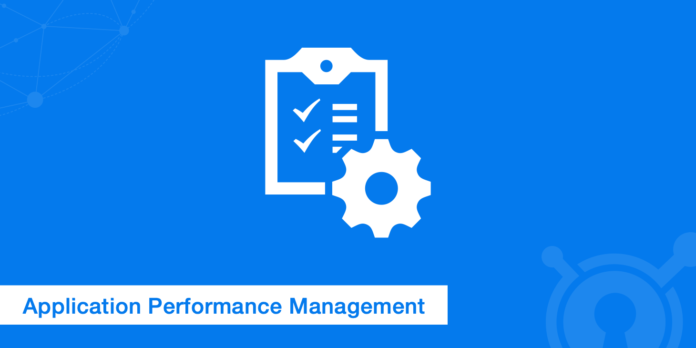The article provides the benefits of managing application performance. It also shows the importance of monitoring and assessing application performance to avoid potential risks and issues.
The basics of Application Performance Management (APM)
Application performance management (APM) is the process of monitoring and managing the performance of software applications. APM tools are used to monitor application performance in real-time, identify and diagnose problems, and help developers to optimize code and improve application performance.
APM is important because it helps to ensure that software applications are performing optimally. Poorly performing software can lead to lost productivity, customer satisfaction issues, and increased operating costs. APM can help organizations to avoid these problems by identifying and addressing performance issues before they cause significant impact.
There are a number of different factors that can affect application performance, including hardware resources, network conditions, application code, and user interactions. APM tools provide visibility into all of these factors so that problems can be identified and resolved quickly.
Organizations that don’t manage their application performance effectively often find themselves playing catch-up as new problems arise. By proactively monitoring and managing application performance, organizations can stay ahead of the curve and avoid disruptions to their business operations.
What You Need to Know
It’s no secret that the world of business is becoming increasingly competitive. In order to stay ahead of the curve, it’s important to ensure that your application performance is up to par. Here are a few things you need to know in order to ensure that your application is running smoothly:
1. Understand What’s Going On Under the Hood
In order to properly manage your application performance, you need to have a good understanding of what’s going on under the hood. This means being aware of things like server load, database queries, and caching mechanisms. By understanding how your application works, you’ll be better equipped to troubleshoot any issues that may arise.
2. Monitor Your Application Performance Regularly
It’s important to keep an eye on your application performance on a regular basis. This can be done by setting up monitoring tools like New Relic or AppDynamics. These tools will give you insights into things like response times, error rates, and slowdowns. By monitoring your performance regularly, you can identify issues early on and take steps to fix them before they cause major problems.
3. Be Proactive About Performance Issues
Don’t wait for performance issues to crop up before taking action. Instead, be proactive about addressing potential problems. This might involve implementing new caching strategies or optimizing database queries. By being proactive, you can avoid major performance issues before they happen.
Getting Started with APM
It’s no secret that application performance management (APM) is important for businesses. After all, poor application performance can lead to lost customers, decreased productivity, and higher operating costs. But what exactly is APM? And how can it help your business?
APM is a process for monitoring and managing the performance of applications. It covers everything from ensuring that applications are available and responsive to users, to tracking and addressing performance issues.
There are many benefits of implementing an APM solution, such as:
- Improved customer satisfaction: By monitoring user experience and identifying and addressing performance issues, you can ensure that your customers are happy with your application.
- Increased productivity: By monitoring application performance and identifying bottlenecks, you can make your applications more efficient and improve employee productivity.
- Reduced operating costs: By monitoring application performance and addressing issues quickly, you can avoid costly downtime and reduce IT support costs.
So now that you know what APM is and why it’s important, how do you get started? Here are a few tips:
- Evaluate your needs: The first step is to assess your organization’s specific needs in terms of application performance. What are your goals? What challenges are you currently facing? Answering these questions will help you identify the right APM solution for your business.
- Research vendors: Once you know what you need, it’s time to start researching vendors.
Monitoring the Right Things
It’s important to monitor the right things in order to manage your application performance. Doing so can help you identify and fix issues, improve your overall performance, and avoid potential problems down the road.
There are a few key things you should keep an eye on:
Response times: How long is it taking for your app to respond to requests? If it’s taking too long, users will likely get frustrated and go elsewhere.
Throughput: This measures how much work your app can handle at once. If it gets overloaded, performance will suffer.
Errors: Obviously, you want to keep an eye on any errors that occur. Not only can they cause performance issues, but they can also indicate potential problems with your code.
Monitoring these things will give you a good idea of how your app is performing and where any potential problems lie. From there, you can take steps to improve your overall performance.
Considerations for Choosing an APM Tool
There are a number of factors to consider when selecting an APM tool. Here are some key considerations:
1. The size and complexity of your application. If you have a large and complex application, you’ll need an APM tool that can provide comprehensive visibility and performance management capabilities.
2. The technologies used in your application. Make sure the APM tool you select supports the technologies used in your application, such as Java, .NET, PHP, etc.
3. Your budget. There is a wide range of APM tools available on the market, so it’s important to consider your budget when making a selection.
4. The features and functionality you need. Make sure the APM tool you select offers the features and functionality you need to effectively manage performance in your application.
How to Use the Data Collected by APM Tools to Improve Your Apps
Application performance management (APM) tools help you monitor your app’s performance in real-time. By collecting data on how your app is performing, APM tools can help you identify and diagnose problems so you can fix them quickly.
But simply collecting data is not enough – you also need to know how to use that data to improve your app’s performance. In this article, we’ll show you how to use the data collected by APM tools to improve your apps.
First, let’s take a look at some of the most important metrics that APM tools track:
· Response time: This is the time it takes for your app to respond to a user request. You want to keep your response times low, as users will get frustrated if they have to wait too long for your app to load.
· Error rate: This is the percentage of requests that result in an error. A high error rate indicates that there are serious problems with your app that need to be fixed.
· Throughput: This is the number of requests that your app can handle per second. If your throughput is low, it means that your app is not able to keep up with demand and will start to slow down under a heavy load.
Now that we’ve covered some of the most important metrics, let’s take a look at how you can use the data collected by APM tools to improve
Conclusion
Application performance management is an important process that can help you improve the quality of your software and make it more responsive to user needs. By monitoring and managing your application performance, you can identify and fix problems before they cause serious damage to your business. In addition, application performance management can help you improve the overall quality of your software products and make them more user-friendly. If you’re not already using application performance management in your business, now is the time to start.















